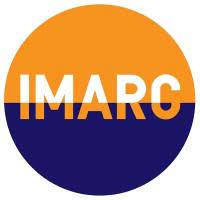
Mining-tech complexity adds to pressure on M&A delivery

by Richard Roberts, Editorial Director, Beacon Events
The mining sector is on track in 2025 to blow past last year’s circa-US$100 billion of merger and acquisition (M&A) activity. That represents a colossal body of asset and organisational amalgamation work. And, according to global technology services firm DXC Technology, a not insignificant amount of critical technology integration.
DXC’s Paul Canterbury says that has not always been tackled effectively, with the complex nature of mining M&A a key factor.
Remote sites, operating technology (OT) and information technology (IT) convergence, environmental approvals, safety imperatives and vital logistics and supply chain interdependencies have traditionally created integration friction. Recent large-scale consolidation of mining equipment, technology and services (METS) software providers has added a layer of complexity, says Canterbury, who heads DXC’s Global Mining Innovation Centre digital evolution team.
Aligning the financial, legal, operational, cultural and technical domains within enterprises to ensure seamless business continuity while laying a path to unlock the full value of mining M&A has probably never been more challenging, he says.
“As organisations prepare for legal day one [LD1] the pressure is immense,” Canterbury says.
“Operations must remain safe, employees must be paid correctly, suppliers and partners must be settled, and revenue must continue to flow. Any misstep risks operational disruption, loss of value, or regulatory non-compliance.
“M&A involves many streams of activity. From finance and treasury to people and culture, and many others. Technology is just one. But all of them, in some way, touch the technology stream.
“It seems trivial but just being able to log on to systems as they change hands is crucial. How do you ensure that the security posture of your organisation is taking into account this new acquisition but still allowing everybody to operate so that product can actually move as quickly as possible and achieve the operational benefit that you’re trying to get from that acquisition or merger?”
DXC last year highlighted its work with ASX-listed Whitehaven Coal, which effectively doubled in size with its acquisition of the former BHP-operated mines, Daunia and Blackwater, in central Queensland, Australia. A major ERP system rollout at the mine sites, which modernised their human resources, finance, procurement and payroll functions, was completed in a record six months.
DXC managed the full integration process using its Master Systems Integration (MSI) framework and a dedicated project management office (PMO) for information technology and systems. It says MSI, supported by DXC’s mining reference architecture, delivered the “governance, structure and repeatable patterns to reduce risk and accelerate speed-to-value in mining M&A”. DXC also provided business analysis, organisational change management and security services.
“The earlier we’re involved to help in planning the better,” Canterbury says.
“As part of that planning we use the DXC mining reference architecture to inform the technology underpinning the processes that sit below all parts of a mining value chain. It gives us a comprehensive view of what is needed to operate a mine from a technological perspective and how best to integrate it.
“MSI, deployed by a team with deep technology and mining expertise, integrates ERP [enterprise resource planning] and OT systems, manages data migration, embeds cyber security and coordinates technology dependencies across all M&A streams, supported by structured organisational change management.
“Post-LD1 we deliver a stable, scalable environment handed over seamlessly to managed service providers.”
Canterbury says MSI has been designed to take account of mining’s unique safety, environmental, logistics and remote operations complexities, and even emergent convolutions.
“It’s actually getting more complicated every day,” he says.
“As the big METS companies and OEM providers try to cover more of the value chain, they’re buying companies all over the place and that consolidation can translate into additional layers of out-of-the-box integrations.
“You as an asset or company buyer may be purchasing complexity. You may strive to maintain a degree of simplicity in your current operation, however, you can inherit more complex technology assets and settings as part of any M&A activity. Suffice to say integration effectiveness is key to capturing the real benefits of these changes in the METS and technology landscape.
“We work with clients to design the optimal IT/OT operating model for the new entity, whether migrating the acquired business onto existing platforms or implementing new systems that better support the combined operation.”
For DXC’s global lead partner, master systems integration & strategic programs, Daniel Biondi, complexity is all relative. He has been coordinating intricate business systems mergers across different industries for three decades. “There is always a lot of complexity happening in the background,” he says. “It means we are adapting to changes and challenges nearly every day during an M&A process. Things are not always going to plan.”
Bringing together vendors, systems and processes without effective coordination produces lots of “noise”, Biondi says. “Transformation requires more than systems and processes — it requires partnership, alignment and a one-team mindset,” he says.
“MSI provides the score, the timing and the leadership so that every piece comes together as one harmonious performance.
“I like to think of MSI as the conductor of an orchestra in delivering the right outcomes.
“The framework helps to structure these programs in a very effective way.”
Biondi says DXC’s joint partnership model builds necessary accountability, trust and shared ownership while MSI provides all-important guiderails for de-risking a transaction and delivering sought-after operational continuity and synergies – converting a strategy that looks good on paper into reality.
“Unlike narrow technology services, MSI coordinates all technology interdependencies across streams—legal, financial, technical, cultural, and environmental—with a disciplined focus on the IT and systems stream, the backbone that enables business continuity,” he says.
“It all sounds simple but it’s not. We make complex things simple so clients can understand how they’re going to achieve their outcomes.”
Canterbury says DXC’s extensive experience across multiple industry sectors gives it a unique edge in a fast-moving M&A landscape.
“DXC is a technology company but our experience-led transformation teams put on hard hats and high-vis and they’re out on site with people helping them through the changes that these transactions bring,” he says.
“Our global experience in large-scale mining transformations ensures value is captured quickly while protecting safety, compliance and stakeholder trust.”
Read more about DXC’s Master Systems Integration framework in the company’s Master Systems Integration for M&A in Mining paper at dxc-au-industry-mining-msi-mergers-acquisitions.pdf.
About IMARC: Collaborating on trends in mining, investment and innovation towards a sustainable future
IMARC is the premier gathering for the most influential minds in the mining industry, a dynamic hub where ideas ignite, and inspiration flows – it is the ultimate meeting ground for global industry leaders. As Australia’s largest and most significant mining event, IMARC attracts over 9,000 decision-makers, industry leaders, policymakers, investors, commodity buyers, technical experts, innovators, and educators from more than 120 countries. For three action-packed days, attendees will engage in cutting-edge learning, forge valuable deals, and experience unparalleled networking opportunities.
MORE or "UNCATEGORIZED"
Kuya Silver Confirms High-Grade Silver-Gold Vein Mineralization at Umm-Hadid with Initial Drill Results up to 1483.9 g/t AgEq over 2 Metres
Kuya Silver Corporation (CSE: KUYA) (OTCQB: KUYAF) (FSE: 6MR1) is... READ MORE
First Phosphate Closes Final Tranche of Oversubscribed Private Placement
First Phosphate Corp. (CSE: PHOS) (OTCQX: FRSPF) (FSE: KD0) is... READ MORE
GFG Receives Final Payment from the Sale of its Rattlesnake Hills Gold Project
GFG Resources Inc. (TSX-V: GFG) (OTCQB: GFGSF) announces that i... READ MORE
Goliath Receives $1,730,882 Through Warrant Exercises, Inclusive Of Crescat Capital A Longtime Strategic And Cornerstone Shareholder
Goliath Resources Limited (TSX-V: GOT) (OTCQB: GOTRF) (FSE: B4IF)... READ MORE
Robex Pours First Gold at Kiniéro on Schedule and Budget
Highlights: Gold bar weighing 2.64 kilograms (85 oz) poured in th... READ MORE












